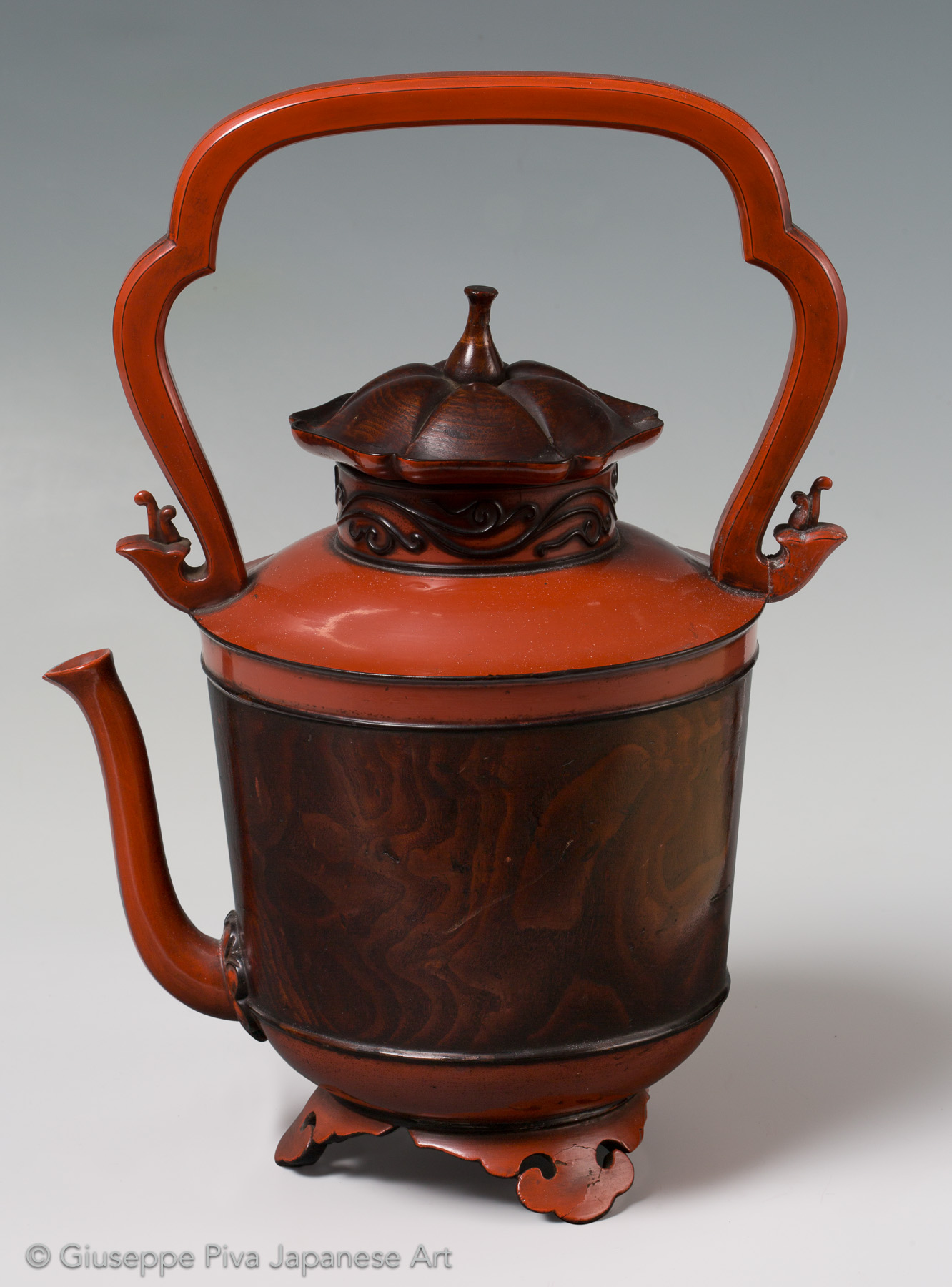Sold
Yutō
A large turned and assembled wood negoro ewer for hot water
Momoyama period, 16th century
Height: 36.8 cm
Literature:
“Negoro: Efflorescence of Medieval Japanese Lacquerware”, Miho Museum, 2013, cat. 259
Negoro lacquer wares were produced in Negoro-ji, the head temple of the Shinai Shingon sect of Buddhism. During medieval times, Negoro utensils were used in shrines and temples related to Negoro-ji for everyday use and for ritual purposes. The cinnabar red layers of lacquer on these wares are intended to gradually wear away with use, revealing the black undercoat. A very important part of enjoying Negoro ware is what Japanese call “wabi” aesthetic: these utensils are never adorned with excessive decoration that would compromise their functionality, while signs of wear and even flaws can be appreciated by people of refined taste as evidence that the pieces have lived a long life.
Ewers for hot water were produced in a great variety of forms, depending on how they were used. As noted by the curators of the exhibition held in 2013 at the Miho Museum in Shigaraki, those with pronounced Chinese-style design like the present one, known as juttoku, were highly prized; in fact, custom of tea drinking was imported from China during the Kamakura period and the most precious items used during tea ceremony came from China or were made Chinese style.
Sku:lac-1221
Info works
Copyright © 2016 - giuseppe piva - VAT: 05104180962





